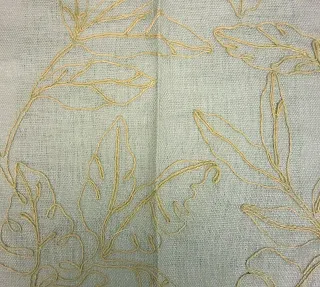Crewel embroidery was usually produced
using wool rather than cotton or silk, which separates it from the main
embroidery medium, though this does not make it unique. Even though the
woollen yarn used was fine in comparison to general wool yarn use, the
wool still gave a much thicker stitch producing a raised aspect to the
finished embroidery, which gave it its unique style. However, because of
the thickness of the yarn an embroidery hoop or frame was needed in
order to maintain an even tension so that the yarn did not distort the
base fabric.
Probably the best examples of
English crewelwork were that produced during the Jacobean period, the
first part of the seventeenth century. Some examples are luckily still
with us. They give us an insight into the high quality and standard that
was regularly achieved by the women who produced these historical gems
of embroidery. It is a tribute to them that we still admire these
Jacobean crewel work pieces four hundred years after they were first
produced.
Much of the crewelwork was created for
domestic settings. Bedroom furnishings were particularly popular and
most large country houses had crewelwork bed hangings and covers that
were being used generations after their creation. Crewelwork was also
used to a certain extent in clothing, with crewel-embroidered jackets
being popular for both sexes at the beginning of the seventeenth
century.
English crewelwork had at its
root the decorative theme of the natural world of flora and fauna. Much
of the work consisted of stylized flowers, leaves and trees. These could
take the form of landscapes, with forest hunting scenes being
particularly popular. However, some of the decorative work was much more
complex and intertwined, using highly stylized flowers and leaves,
giving a rich and detailed surface to the fabric.
Crewelwork made a comeback in the 60s and 70s and is slowly being seen more in decorating fabrics but with a more modern twist placed on them. Such as using raffia or velvet for the yarn rather than wool.





No comments:
Post a Comment